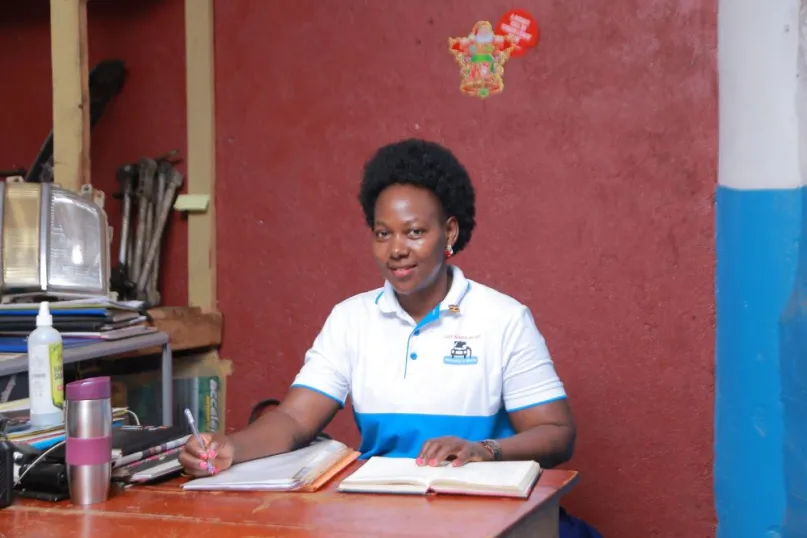Saving to Build Resilience: At Odds With Saving for Future Goals?

Lack of financial resilience is often equated to lack of income. Financial diaries research, however, has shown that
Scale2Save defines financial resilience as "the ability to meet daily and lifecycle needs, build assets, cope with unexpected expenditure and shocks and invest for the future.” This type of resilience requires people to have access to services, such as savings accounts and insurance, that allow them to manage their risks.
To understand to what extent savings allowed customers to increase financial resilience during the Scale2Save six-year learning program, MarketShare Associates (MSA) conducted customer market research between October 2021 and June 2022 with six of Scale2Save’s partner Financial Service Providers (FSPs) in Morocco, Uganda, Nigeria and Kenya. The learning paper, which details the research findings, discusses the following questions:
- How does demand for savings vary across segments and why?
- How were savings used to improve household well-being and cope with shocks?
- What challenges did customers face in using formal savings products to build resilience?
Savings can help build resilience
We found that approximately 70 percent of FSP customers reported having used part of their savings, and that most were using their savings as intended, suggesting they had met their savings goals. In many cases, savings helped build customers’ financial resilience by being able to respond directly to shocks (e.g., using savings to cover medical expenses or covering basic needs when household income went down) or to invest their savings in productive ways, thus reducing their vulnerability to potential future shocks. The table below reflects a degree of awareness among the customer base about the likely future use of savings.
Figure 1: Intended use of savings versus actual use
| Savings category | Savings goals | Actual use of savings |
|---|---|---|
| Unexpected expenses (rainy day savings, medical expenses, coping with economic shocks) | 40% | 37% |
| Household-related goal (special occasion, celebration, school fees, etc.) | 36% | 34% |
| Investment in personal asset | 7% | 14% |
| Business-related investments | 20% | 49% |
Challenges for customers
There were three types of challenges that customers faced in using formal savings products for resilience reasons:
- Customers who used their savings to cope with a financial emergency often found the funds were insufficient. They may not have saved enough because their account had not been open very long, or because low earnings limited their ability to save.
- Some customers indicated that they preferred to use other sources of funds to cope with various emergencies. This was especially the case among FSPs that strongly encourage customers to save for specific goals, leading customers to prefer to retain their savings and identify alternative (and potentially cheaper) sources of funds, like friends and family.
- Some customers faced challenges in accessing their savings during emergencies, preventing them from using their savings to cope with emergencies. Other barriers were related to the product features and were often specific to certain FSPs. For example, customers reported high fees for withdrawing funds or restrictions on how much could be withdrawn. This may also explain why customers resorted to using other sources of funds to cope with emergencies.
Account features make a big difference
Accounts with low requirements or fewer limitations on balances or withdrawals enabled customers to withdraw savings during a crisis. However, these same features did not incentivize accountholders to accumulate savings.
The research also found that:
- Customers who had accumulated savings they could later draw on were better able to cope with shocks.
- Customers who were incentivized to save for specific purposes or who had products that limited withdrawing their savings were better able to accumulate savings.
- Access to agent and mobile channels facilitated the ability to withdraw savings.
- Customer segmentation is important:
- Adult and male customers saved more frequently for business-related purposes.
- Youth saved for unexpected expenses far more frequently than adults: 44 percent of youth compared to 34 percent of adults.
- Female customers saved more frequently for “household-related goals,” especially saving for their children’s education.
Recommendations for FSPs
Based on these findings, we recommend the following for FSPs to help customers improve their resilience through savings-led services:
- Offer two types of savings accounts for the low-income market: one account to meet customers’ day-to-day liquidity needs and which can be accessed easily in case of emergency, and another account for goal-driven savings.
- Expand incentive systems to encourage staff and agents not only to promote the opening of savings accounts but also to improve account use and savings accumulation.
- Take greater advantage of the opportunities provided for remote access by digital financial services.
- Consistently communicate to customers about the channels they have available for saving and how to use them.


